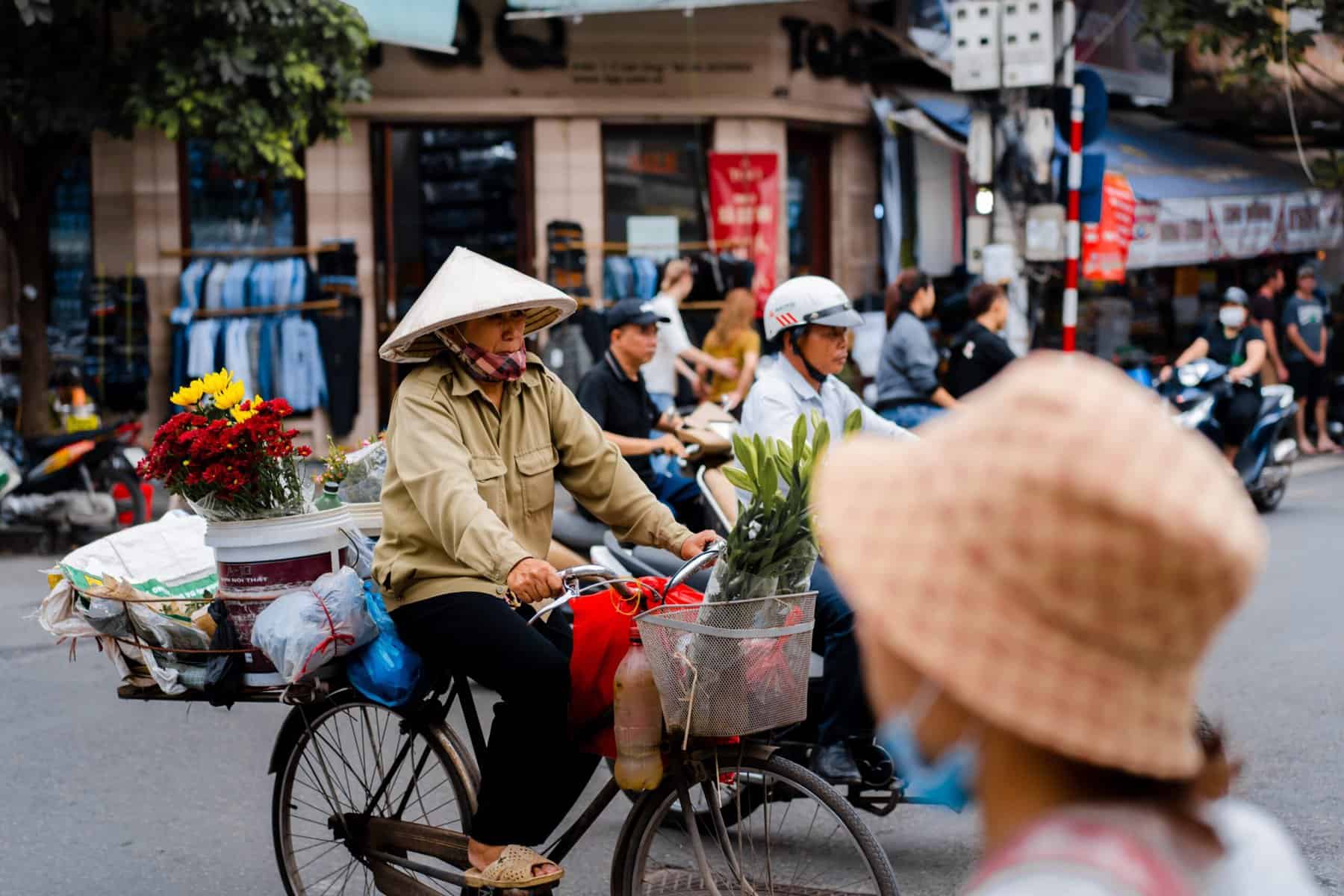
Visit The Best Cities In Vietnam

Vietnam is a country rich in history and culture and along with great food makes its cities some of the best to visit in the world.
Starting with the country’s capital Hanoi in the north, a fascinating city filled with French colonial landmarks, ancient temples, and a bustling street food scene, offers a unique cultural immersion. Then there is the country’s commercial hub down in the south, Ho Chi Minh City (formerly known as Saigon), renowned for its vibrant nightlife, impressive skyscrapers, and historic buildings.
In the country’s central zone, you’ll find the ancient city of Hue, renowned for its citadel, palaces and emperor tombs and the costal city of Da Nang which has stunning beaches and world-class resorts. Nearby, Da Nang is the ancient town of Hoi An, a UNESCO World Heritage Site, where lantern-lit streets and well-preserved architecture bring history to life.
Each city in Vietnam offers a different slice of the country, making them diverse and appealing destinations for travellers. In this blog, we have put together the best cities to visit in Vietnam and what makes each so wonderful to visit, so let’s get started.
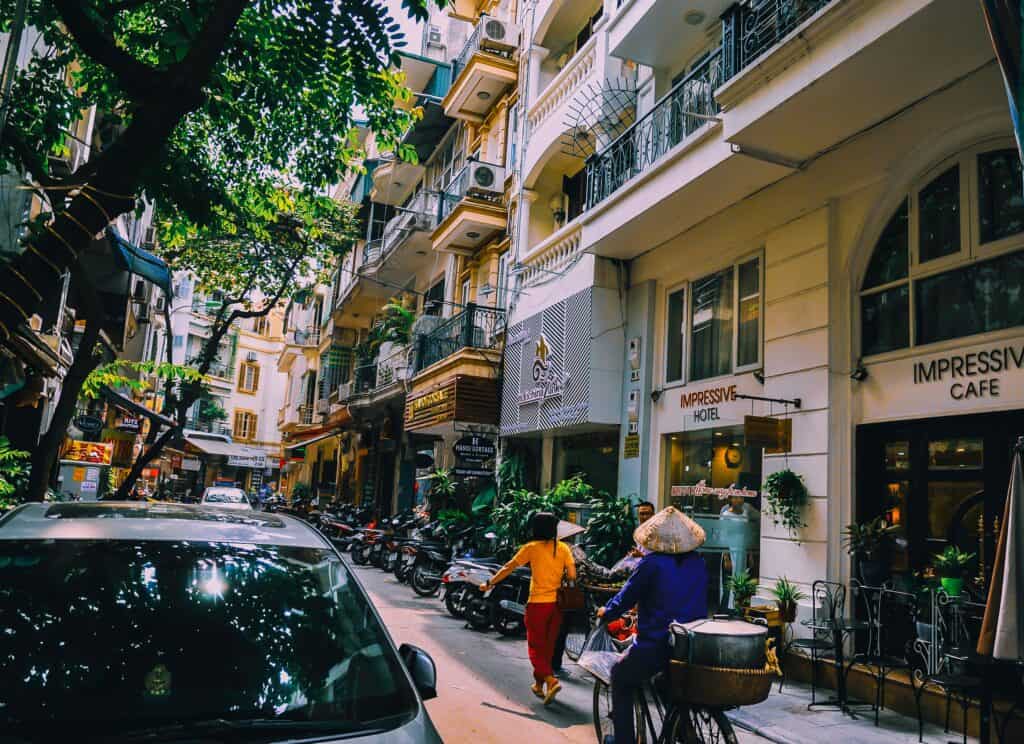
Colonial Hanoi
Hanoi, is one of the best cities in the country. This capital has some of the best well-preserved architecture and sights to visit in the country. From ancient temples and pagodas in the Old Quarter to colonial buildings in the French Quarter. Hanoi is also a culinary paradise, famous for its street food culture with iconic dishes like pho. Its cultural attractions, such as Hoan Kiem Lake, The Temple of Literature and the Ho Chi Minh Mausoleum, provide fascinating insights into Vietnamese history and traditions. With its bustling markets, serene lakes, friendly locals, and pulsating nightlife, Hanoi is truly one of Vietnam’s best cities.
Here are the best things to see and do in the city of Hanoi.
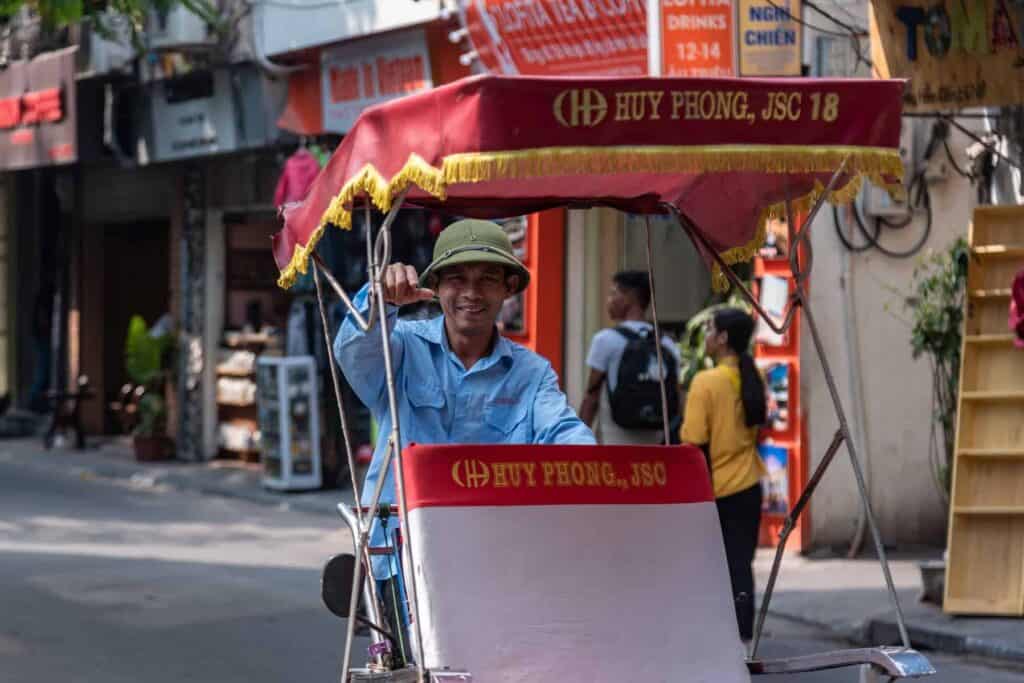
Old Quarter
In the heart of Hanoi lies in its old quarter, a maze of streets dating back to the 13th century. Each street is named after the trade that used to take place there, such as Silk Street or Silver Street. A rickshaw ride is the best way to explore the area. The rickshaw driver will weave you through the bustling markets and narrow alleyways with each turn revealing old buildings and storefronts with vendors and artisans going about with their daily activities. This immersive journey encapsulates the essence of the city, making it a must-do when in Hanoi.
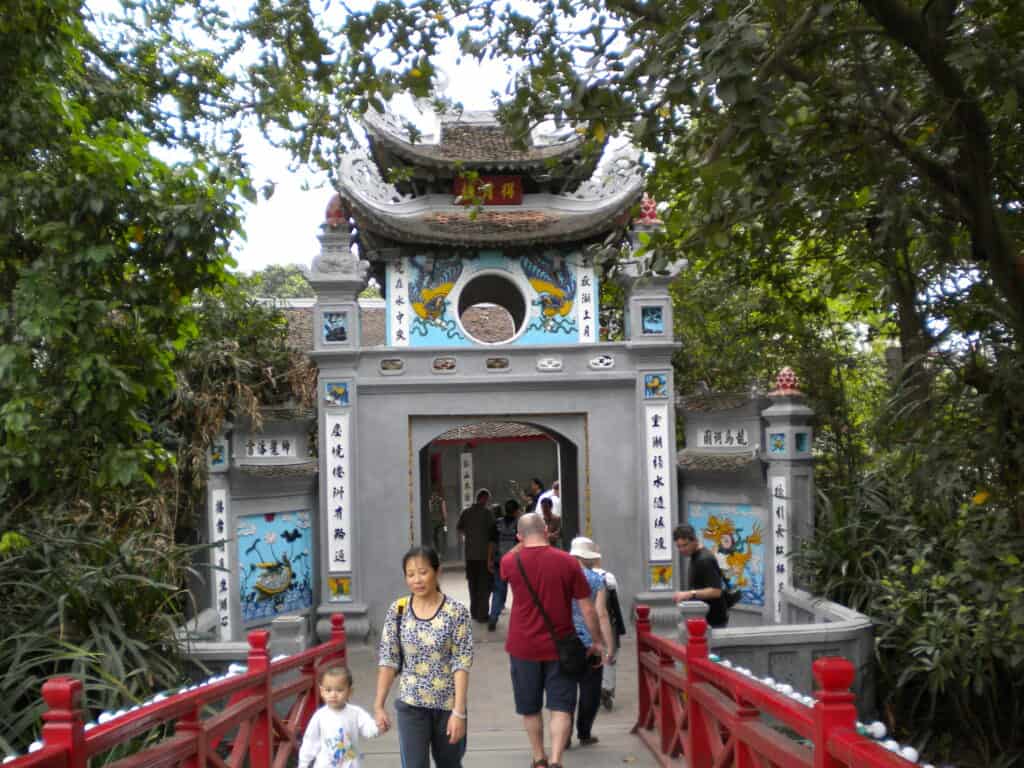
Hoan Kiem Lake and Ngoc Son Temple
At the centre of the city, you’ll find the tranquil Hoan Kiem Lake, also known as Turtle Lake. Here you can watch the locals practising Tai Chi and play the traditional game of game of “O An Quan” (Mandarin squares).
Across the charming red Huc Bridge is to Ngoc Son Temple, located on a small island in the lake. Here, you can visit the temple and view the intricate architecture. Be sure to look for the preserved specimen of a giant turtle, believed to be one of the rare species that lived within the lake.
The lake area is open all day and free to enter, however there is a small charge for entering the temple (open daily from 8am-5pm).
Ba Dinh Square & Ho Chi Minh Mausoleum
Ba Dinh Square is named after the Ba Dinh Uprising, an anti-French protest at the end of the 19th century. This immense space can accommodate up to 10,000 people and is used for national events and parades. Surrounding the square are beautiful gardens and important government buildings like the Presidential Palace and the National Assembly building.
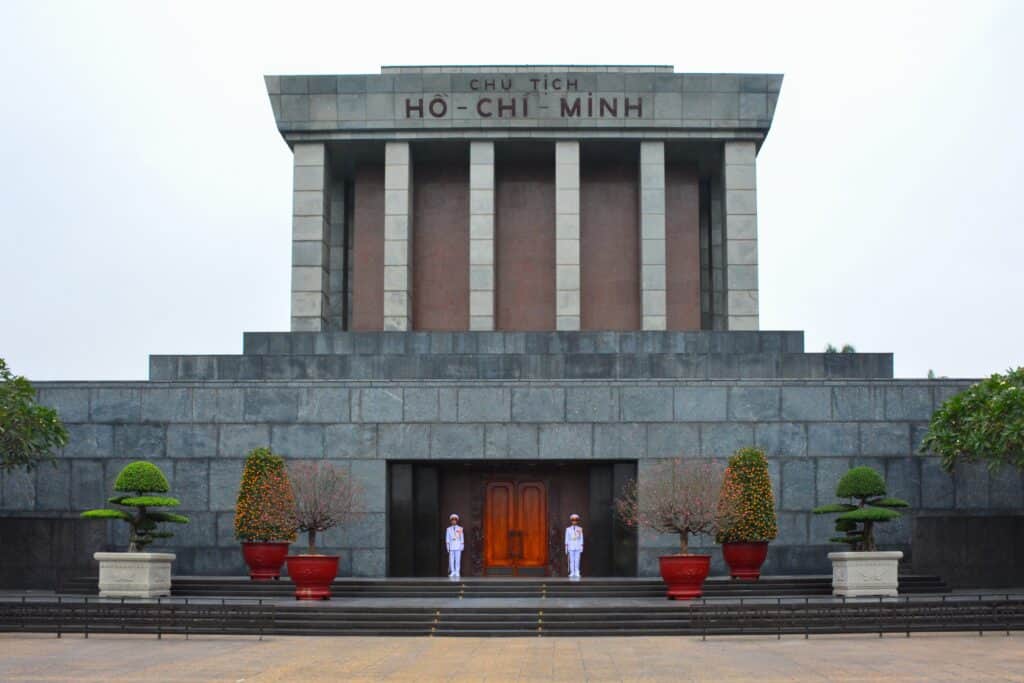
Ho Chi Minh Mausoleum
Also located on Ba Dinh Square is a huge grey imposing mausoleum that houses the embalmed body of Ho Chi Minh, a key figure in the Vietnamese struggle for independence. The mausoleum is heavily guarded by military personnel, reinforcing the significance of the place. Inside, the atmosphere is hushed and reverent, with visitors asked to maintain silence as they pass by Ho Chi Minh’s preserved body. The experience is not just about witnessing a piece of history, but also about understanding the deep reverence the Vietnamese people hold for their national hero.
The mausoleum is free to visit, however the opening days/hours vary at different times of the year. So check out the latest information online in advance to help you plan your visit.
Also, to note, when visiting, wear appropriate clothing (long pants/trousers, shoes and shoulders covered). Cameras and filming are not allowed.
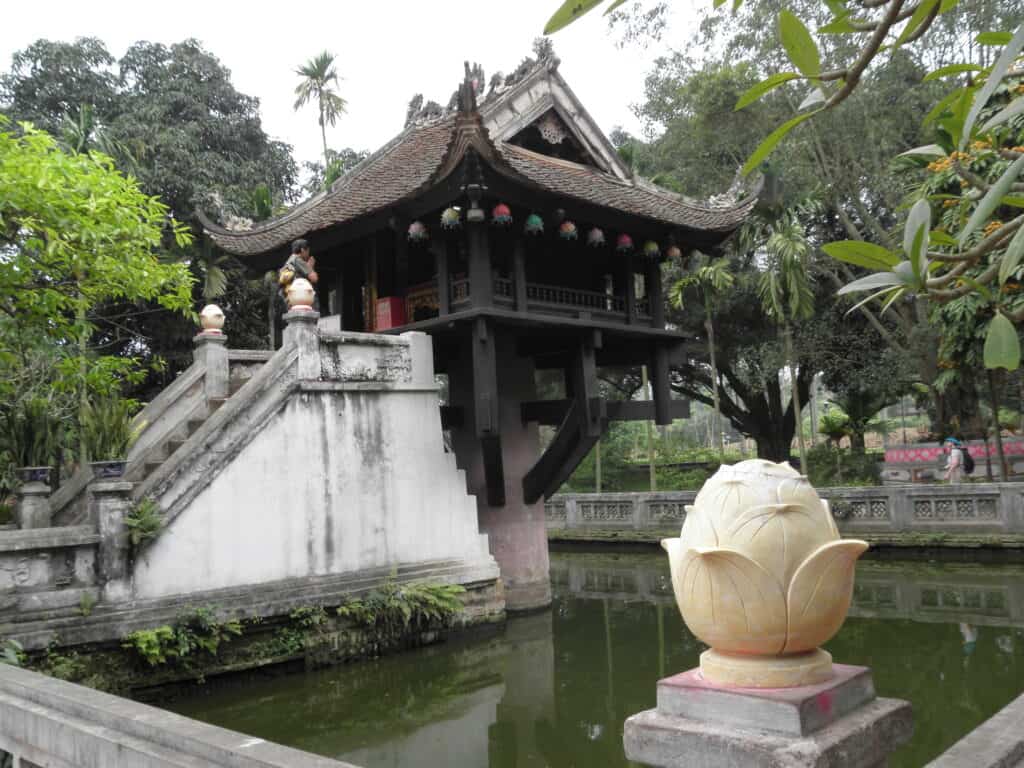
The One Pillar Pagoda
This historic Buddhist temple is a cultural and historical symbol that represents a thousand-year civilization in Vietnam. Built of wood on a single stone pillar, the pagoda is designed to resemble a lotus blossom, a symbol of purity, emerging from the water’s surface.
The pagoda is open daily (8am-5pm) and is free to enter.
The Imperial Citadel of Thang Long
This UNESCO World Heritage Site is an impressive complex of historic structures that have witnessed the evolution of Vietnam over centuries. The citadel, originally built in the 11th century, was the heart of Vietnamese military power and today you can explore the ancient gates, buildings and artefacts.
The site is open daily (except Mondays) and tickets can be purchased at the entrance.
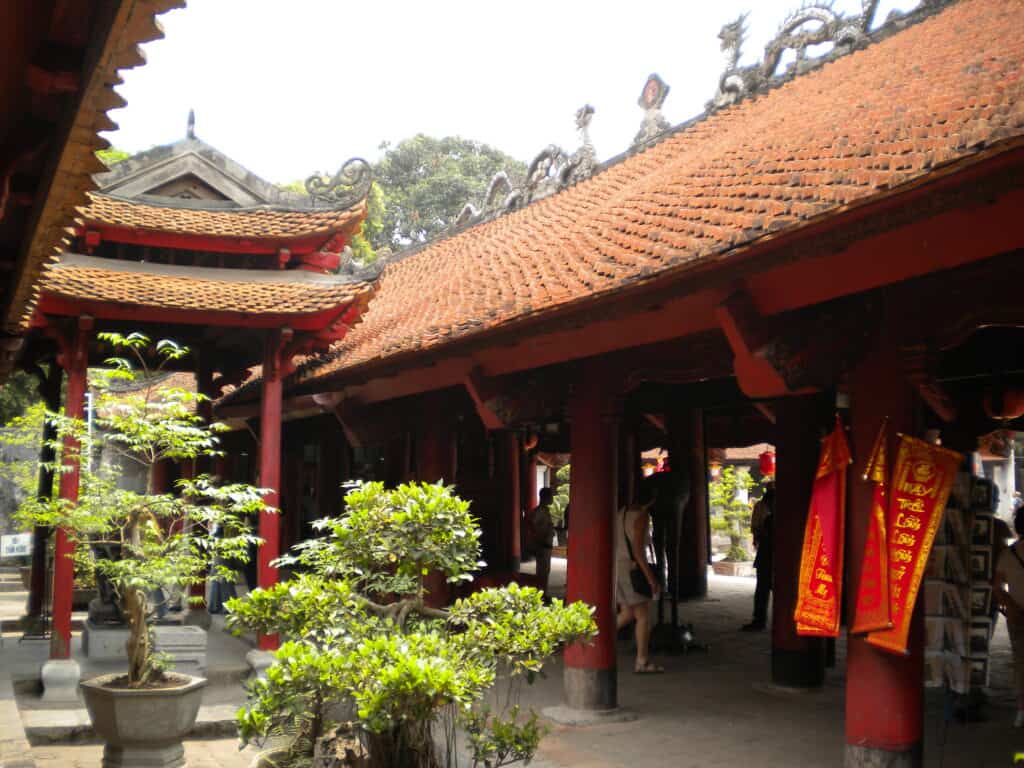
The Temple of Literature
Visiting the Temple of Literature is like stepping back in time to the scholarly traditions of ancient Vietnam. The temple, originally built in 1070, is a tribute to Confucius and was the site of the country’s first university. As you walk through the five courtyards that make up this serene and picturesque complex, you’re greeted by beautifully manicured gardens, peaceful ponds, and stunning architectural elements that reflect the distinct Vietnamese style. The stone steles resting on stone turtles are particularly striking, inscribed with the names of the university’s successful scholars.
The site is open daily (8am-5pm) and tickets can be purchased at the entrance.
Dong Xuan Market & Street Food
Located in the Old Quarter, this is the largest covered market in the city and offers everything from fresh produce and seafood to clothing and household items. Prices here are usually lower than in the more tourist-oriented shops, making it a great place for bargain hunters. In the evening the streets around the market come alive with vendors selling street food, trinkets, and handicrafts.
Eat At Cha Ca La Vong
This historic eatery is one of the oldest in Hanoi and is celebrated for its eponymous dish, Cha Ca La Vong, a flavourful fusion of fish seasoned with turmeric. The dish is served with rice noodles, fresh herbs, and peanuts, creating a taste and texture that is quintessentially Vietnamese. This unpretentious eatery is situated on Cha Ca Street, which was named after the dish.
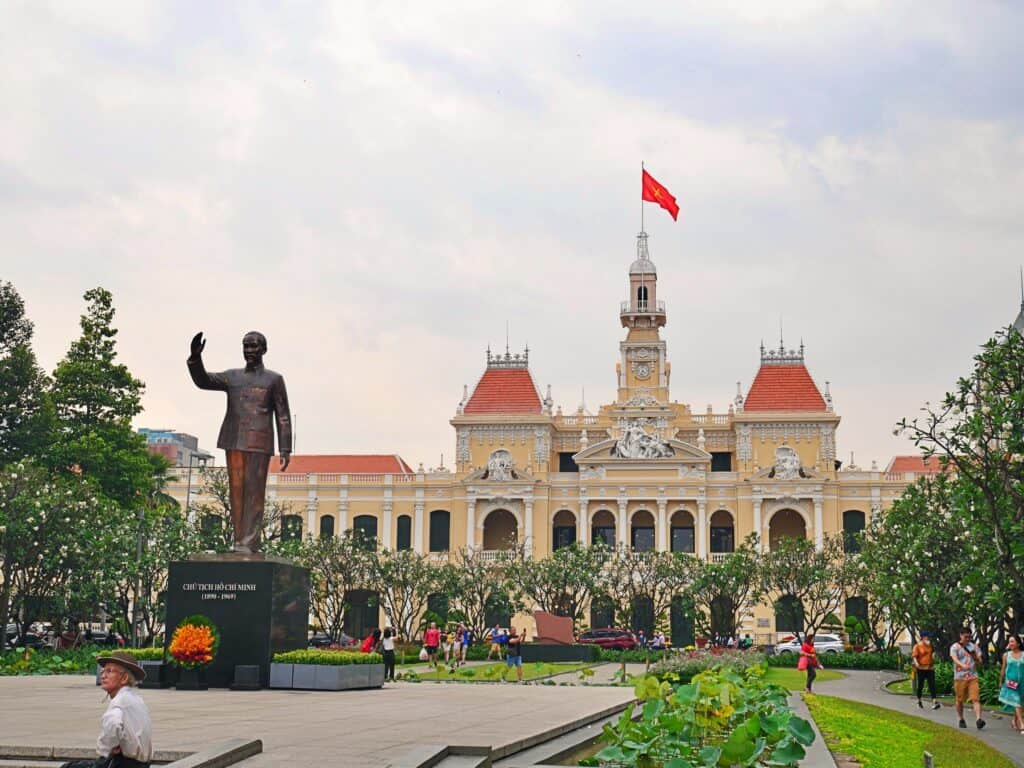
Commercial Ho Chi Minh
Ho Chi Minh City, formerly known as Saigon, is Vietnam’s commercial hub. This city offers an enchanting mix of culture, cuisine, and commerce, making it one of the best cities to visit in Vietnam. Here are the top attractions to explore in Ho Chi Minh:

The Independence Palace
Also, known as the Reunification Palace is one of the most significant historical landmark’s in the city. Built on the site of the former Norodom Palace and is known for its role in the end of the Vietnam War in 1975, when a North Vietnamese Army tank crashed through its gates. Today you can explore the palace’s many rooms and exhibits, including the war command room with its huge maps and old communication equipment, giving a glimpse into the country’s turbulent past.
The museum is opened daily and tickets can be purchased at the entrance. Visiting hours typically run from 8am-4pm, however check the website for the latest opening information, as the palace is sometimes closed for official occasions.
War Remnants Museum
This is a sobering museum which details the effects of the Vietnam War on the Vietnamese population. This museum is one of the top attractions in the city and gives you a deeper understanding of the impact and aftermath of the war.
The museum is open daily from 7am-12pm and then 1:30-5pm and tickets can be purchased at entrance.
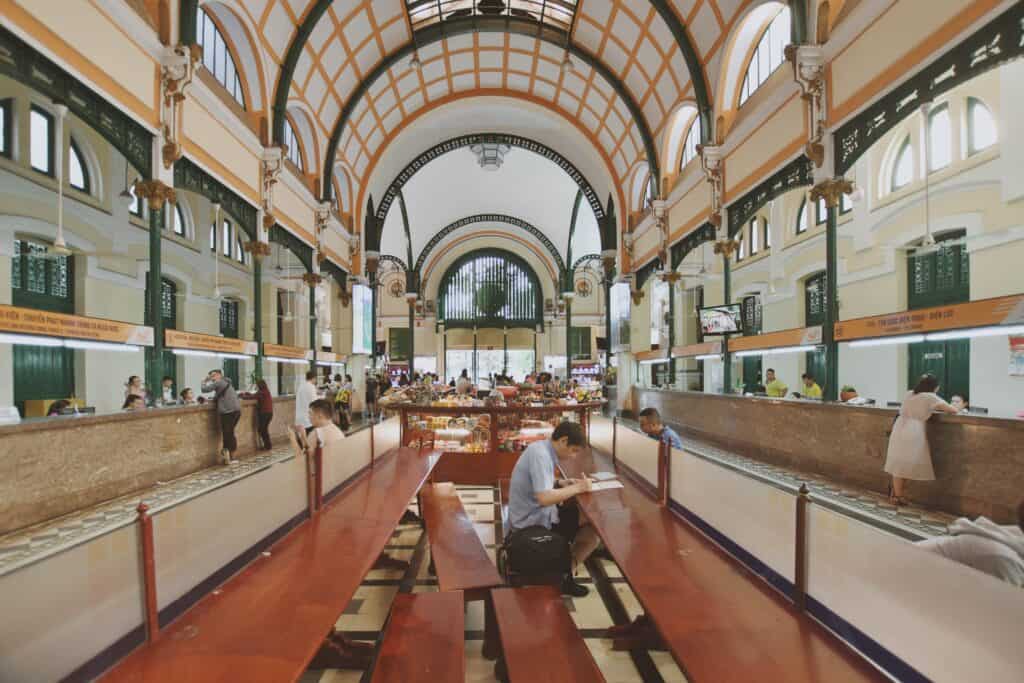
Central Post Office
Designed by the famous architect Gustave Eiffel in the late 19th century, this grand building stands as a testament to the city’s colonial past. As soon as you step inside, you’ll be transported back in time, with its high ceilings and vintage telephone booths. But, it’s not just a relic of history – it’s still a functioning post office! Here, amidst the hustle and bustle, you can send a postcard or simply soak up the unique blend of French and Vietnamese architectural elements.
The Central Post Office is free to visit and opened daily from 7am-5pm Monday to Friday, Saturday 7am-6pm and Sunday 8am-6pm.
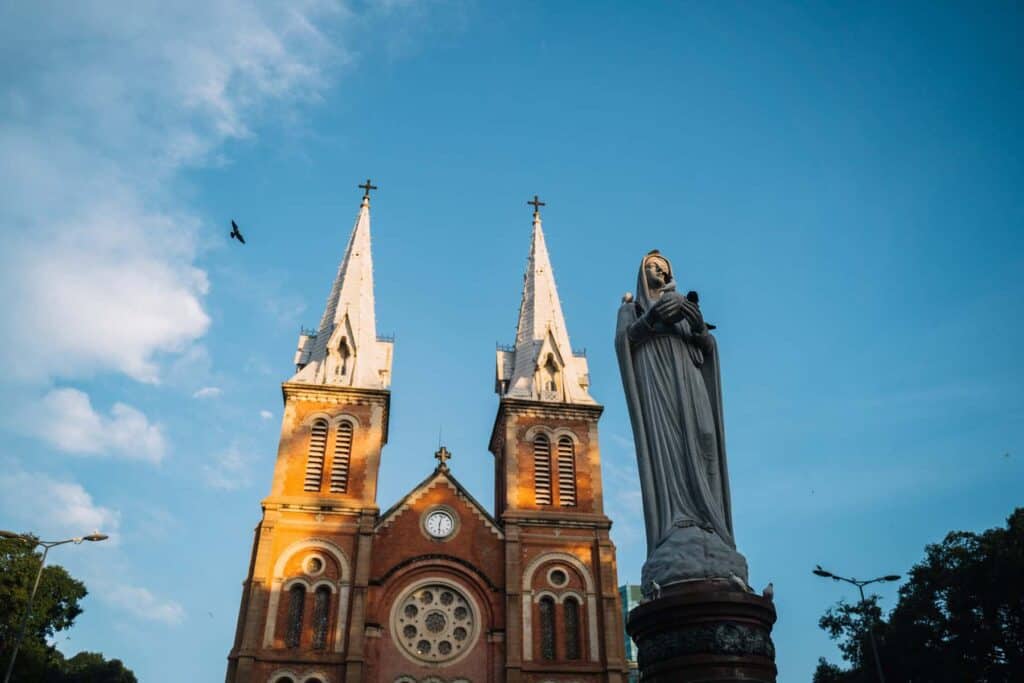
Notre Dame Cathedral
Built in the late 1880s by French colonists, is one of the few remaining strongholds of Catholicism in largely Buddhist Vietnam.
The Notre Dame Cathedral is open daily and free to visit, but has very specific opening hours. Monday to Saturday you can visit between 8am-11am and 2pm-4pm. On Sundays, services are held throughout the day so it is best to check visiting hours beforehand.
Ben Thanh Market
One of the earliest surviving structures in the city, Ben Thanh Market offers a great atmosphere that is absolutely authentically Vietnamese. This bustling market sells everything from clothing and accessories to fresh produce and local delicacies. It’s the perfect place to buy souvenirs and eat some local street food.
The market opens at 6am-6pm, however the market starts to close down from around 5pm. In the evening (from 6pm), the streets surrounding the market become a popular night market.
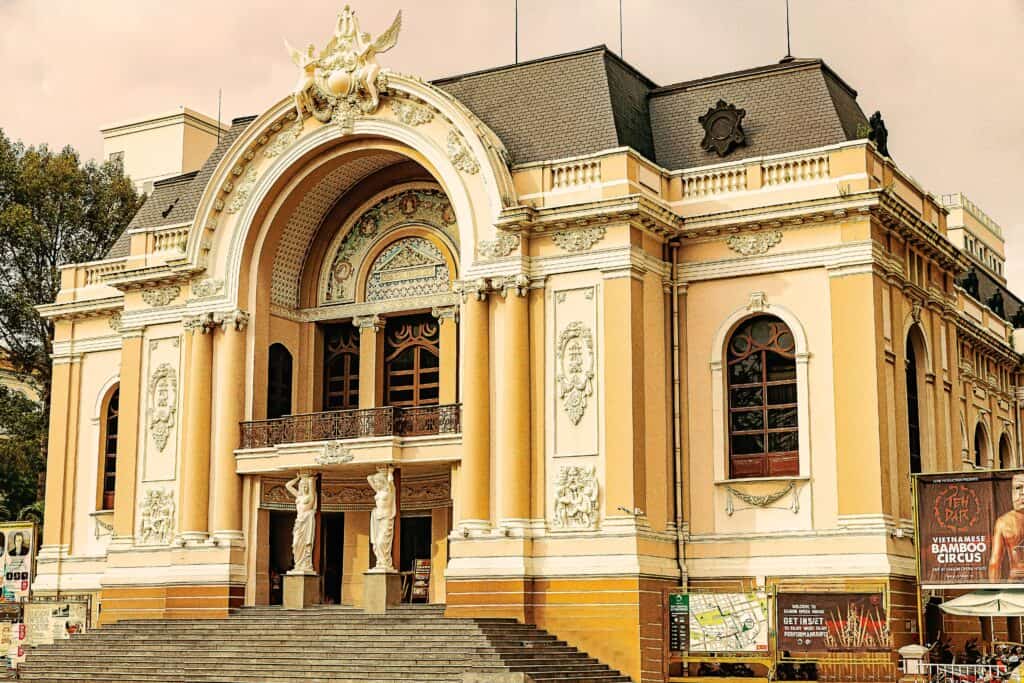
Opera House
Built in 1897 by French architect Eugene Ferret, the Saigon Opera House is a fine example of French colonial architecture. The Opera House offers a variety of performances, ranging from traditional opera, Vietnamese music and dance to modern theatrical arts.
Jade Emperor Pagoda
The Jade Emperor Pagoda, also known as the Tortoise Pagoda, is an atmospheric temple filled with intricate carvings and statues of Buddhist and Taoist deities. The pagoda is open every day from 8am-5pm and is free to visit.
Bui Vien Walking Street
Known as the backpacker district, Bui Vien Street is famous for its lively nightlife scene with bars, clubs, and street food vendors.
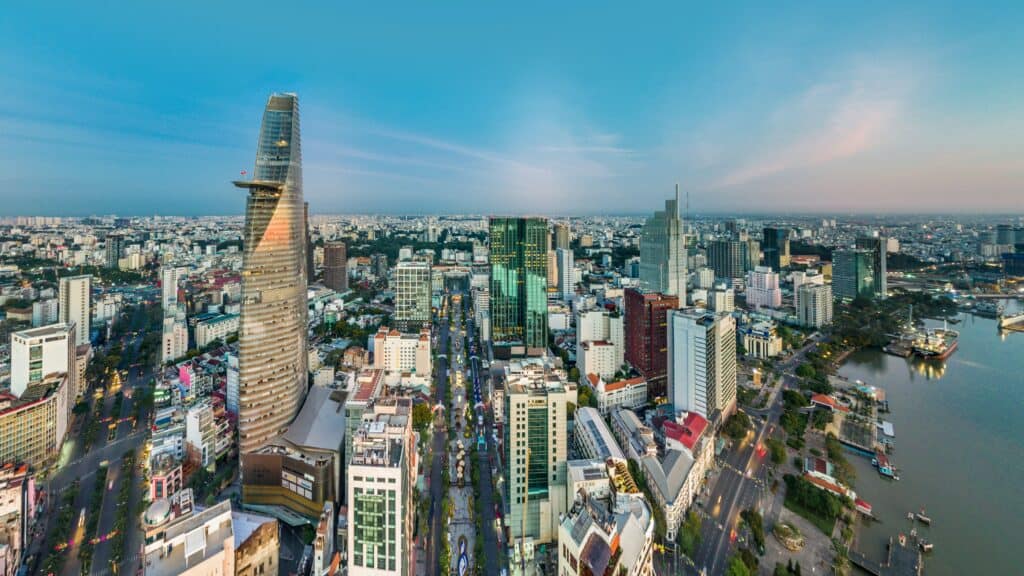
Bitexco Financial Tower
Soaring above the skyline of the city, the Bitexco Financial Tower is an architectural marvel that embodies the city’s rapid development and modern spirit. Standing at 262 metres tall, this 68-story building is the tallest in the city and its unique lotus-shaped design, inspired by Vietnam’s national flower, has made it one of the city’s most recognisable landmarks. The Bitexco Financial Tower is where you can enjoy shopping, entertainment and dining experiences, however the most popular attraction is visiting the Sky Deck on the 49th floor for panoramic views of the city.
The building complex is open daily until 11pm. To visit the sky deck, tickets can be purchased at the entrance or online. The Sky Deck is open from 9:30am-9:30pm and last entry is 45 minutes before closing. The best time to visit is at sunset.
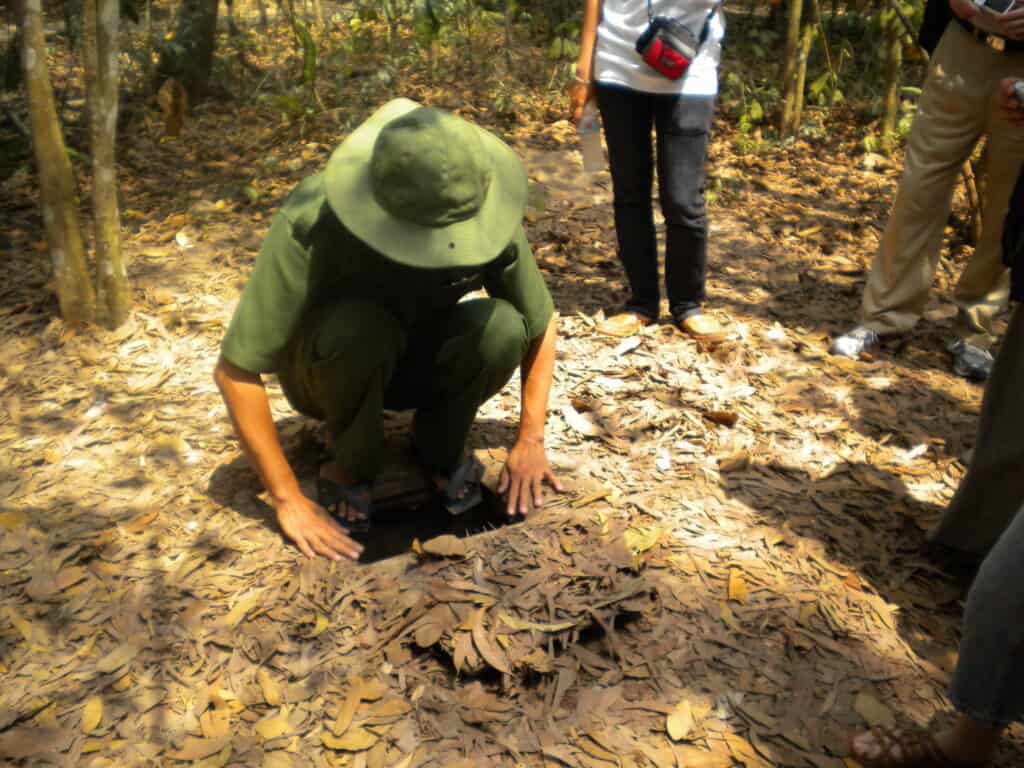
Cu Chi Tunnels
This impressive network of subterranean passages, located approximately 70 kilometres from Ho Chi Minh City, offers a unique chance to walk in the footsteps of soldiers and experience a key part of Vietnam’s riveting history.
There are two sites where the tunnels of Cu Chi can be visited – Ben Dinh and, 15km beyond, Ben Duoc, Ben Dinh is the more popular site.
Both sites offer an immersive glimpse into the strategies and living conditions of the Viet Cong soldiers during the Vietnam War.
In addition to the tunnels, you can visit the underground kitchens, living areas, and even hospitals. If you’re feeling brave, challenge yourself to crawl through some of the original (and very tight) tunnels that have been preserved. Some parts of the complex offer shooting ranges where you can try out historical firearms (additional cost applies).
The Cu Chi Tunnels are open daily from 7am-5pm and tickets can be purchased as part of a guided tour from Ho Chi Minh or at the ticket office at either of the two sites.
Whether you’re a history buff, an adventure seeker, or simply curious, the Cu Chi Tunnels promise an unforgettable journey into Vietnam’s past. Don’t miss the chance to experience this remarkable testament to human resilience and ingenuity.
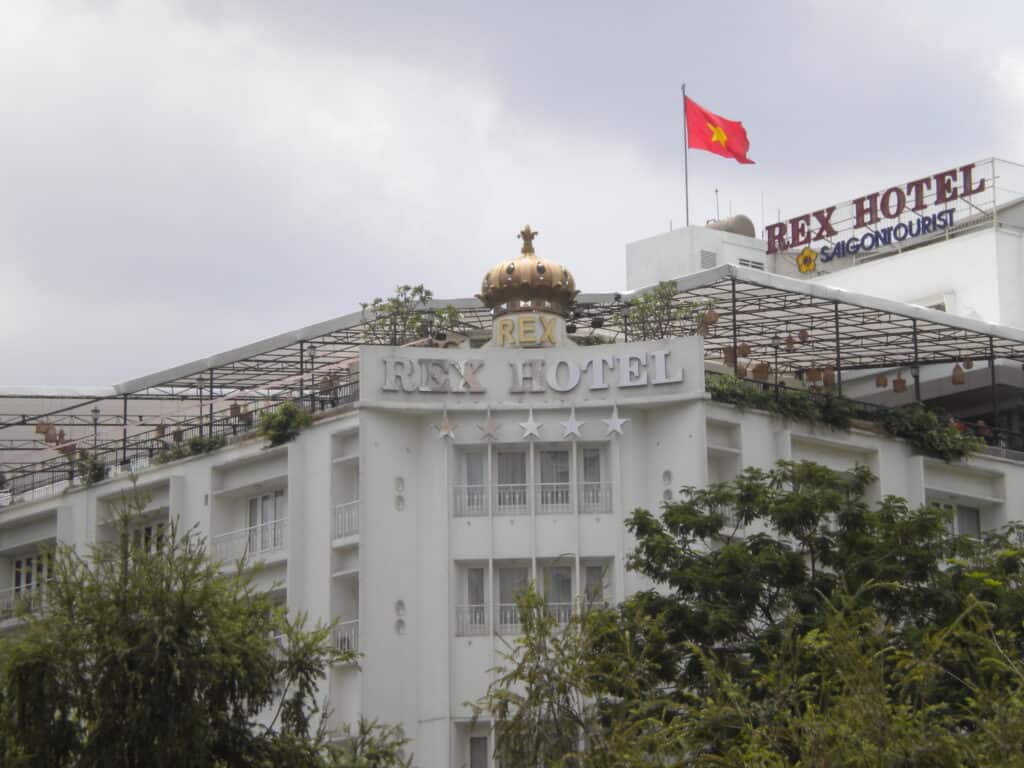
Experience The City’s Historic Hotels
A visit to Ho Chi Minh City, is not complete without experiencing its historic hotels. These grand establishments are not just places for rest and relaxation, but they also offer a unique window into the city’s vibrant past.
One of the most famous historic hotels in Saigon is the Rex Hotel and gained fame as it served as the base for the American military command’s daily press briefings. Today, the Rex Hotel maintains its classic charm, offering guests a chance to experience history while enjoying modern amenities and a rooftop bar with panoramic views of the city.
Just a short stroll from the Rex is the Hotel Majestic, another gem from the colonial era. Built in 1925, it exudes an old-world charm that transports guests back to a bygone era. The hotel’s rooftop bar, offers stunning views of the Saigon River, making it a perfect spot for unwinding after a day of exploration.
The Continental Hotel, the oldest hotel in Vietnam, is another must-visit historic hotel as it was immortalised in Graham Greene’s novel “The Quiet American”.
These historic hotels offer more than just a place to stay; they provide a unique journey through the city’s rich history. Whether you’re sipping a cocktail at the Rex’s rooftop bar, admiring the Saigon River from the Hotel Majestic, or soaking up the cultural atmosphere at the Continental, you’re sure to enjoy a memorable and enriching experience in Ho Chi Minh city.
Head to our Travel Resources page to see what resources we always use for our hotel bookings.

Costal Da Nang
Another of Vietnam’s best cities is Da Nang. This is Vietnam’s third-largest city and a bustling metropolis that has managed to maintain its small-town charm. Lying on the Eastern Sea coast, midway between Hanoi and Ho Chi Minh City, Da Nang offers an attractive blend of spectacular mountain views, pristine sandy beaches, historical sites, and modern attractions. This makes it one of the best cities to visit in Vietnam.
Starting with its beaches, the city has many world-class beach resorts and hotels providing the perfect setting for a relaxing vacation. These beachfront havens are renowned for their luxurious accommodations, lavish spas, excellent dining options, and breathtaking views of the East Sea.
The soft white sands of My Khe Beach, Non Nuoc Beach, and Bac My An Beach are close to these hotel resorts, offering endless opportunities for swimming, sunbathing, and water sports.
Staying in Da Nang’s also places you in close proximity to the area’s key attractions and include:
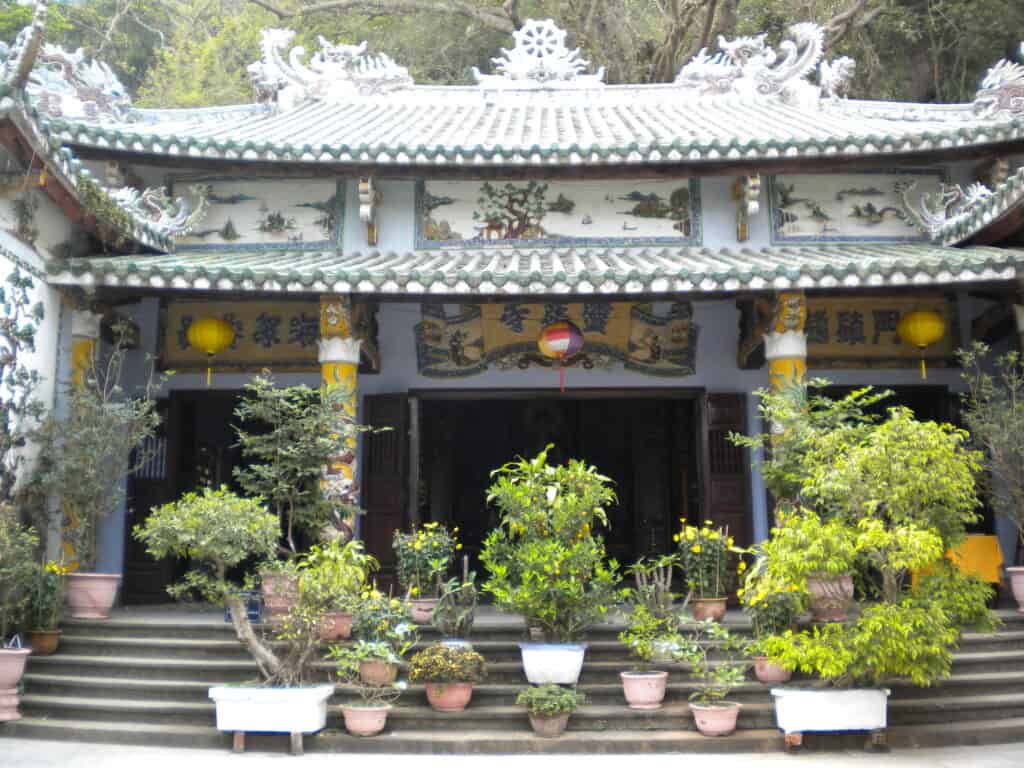
Marble Mountains
Located just south of Da Nang, the Marble Mountains are a cluster of five marble and limestone hills, each named after the five elements: Metal, Water, Wood, Fire, and Earth. It’s home to several Buddhist sanctuaries, pagodas, and stunning natural caves.
Each mountain holds its unique charm, but the Water Mountain (“Thuy Son”) is the most visited due to its accessible pathways, captivating caves, and beautiful Buddhist sanctuaries. The journey to the top is made easy with stone steps, and once you reach the peak, you’re rewarded with panoramic views of the surrounding landscape. The other mountains, while not as easily accessible, offer a quiet retreat for those seeking solitude amidst nature.
The Marble Mountains are open all year-round from 7am-5:30pm and tickets can be purchased on site.
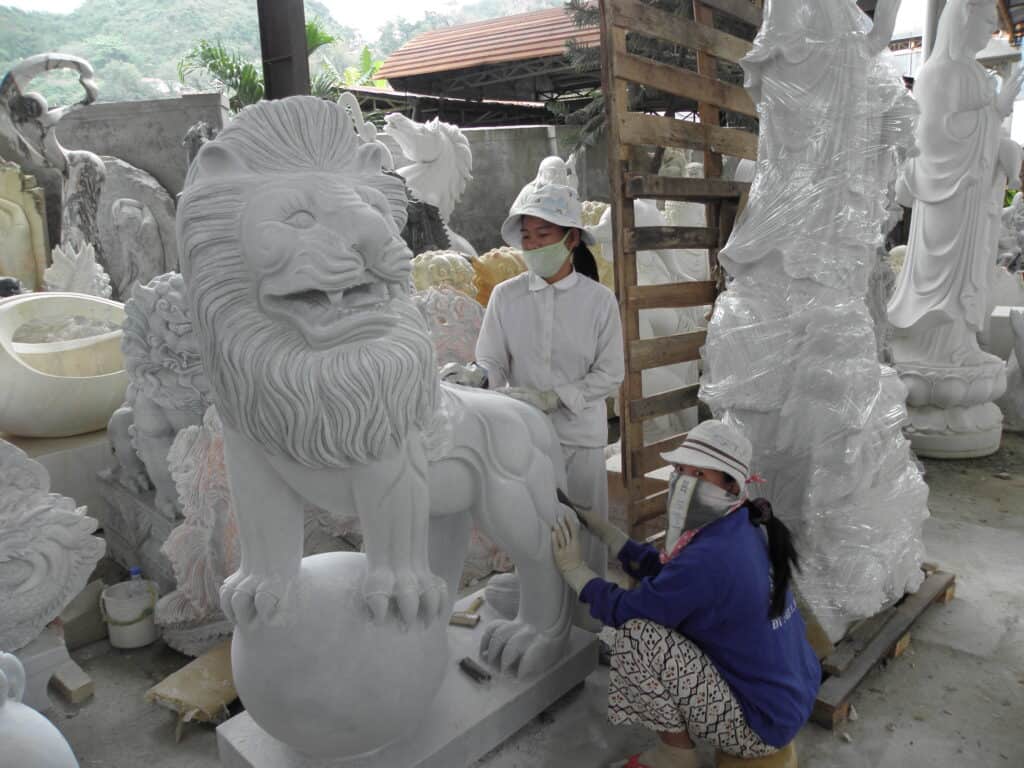
Next to Marble Mountain is the Non Nuoc Stone Carving Village and is renowned for its intricate and exquisite stone artworks. As you stroll through the village, you can watch skilled artisans meticulously hone their crafts, creating stunning pieces that range from small, intricate jewellery too large, detailed statues. Not only can you see the stone masons and artisans at work you can also buy pieces to take back home (or ship home). The village is open daily from 8am-7pm.
Son Tra Peninsula and Linh Ung Pagoda
The Son Tra Peninsula is a beautiful nature reserve and at the peak stands the enormous Lady Buddha statue, part of the Linh Ung Pagoda complex.
The site is open daily (6am-7pm) and is free to enter.
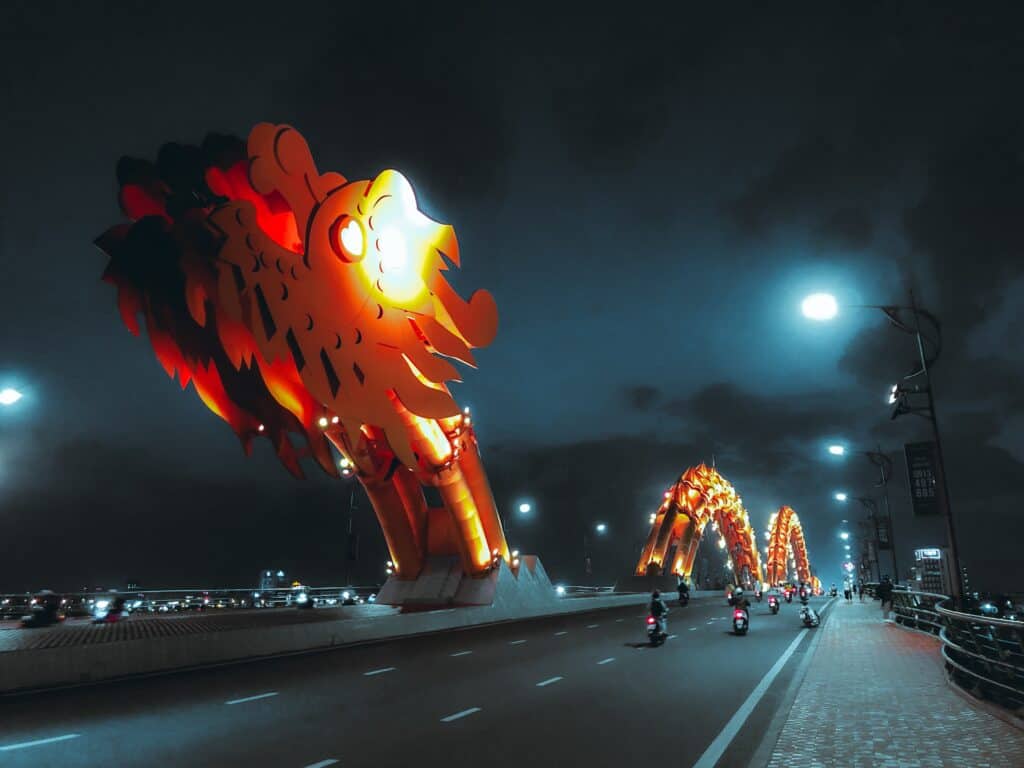
Dragon Bridge
A symbol of Da Nang, the Dragon Bridge spans the Han River and is lit up at night.
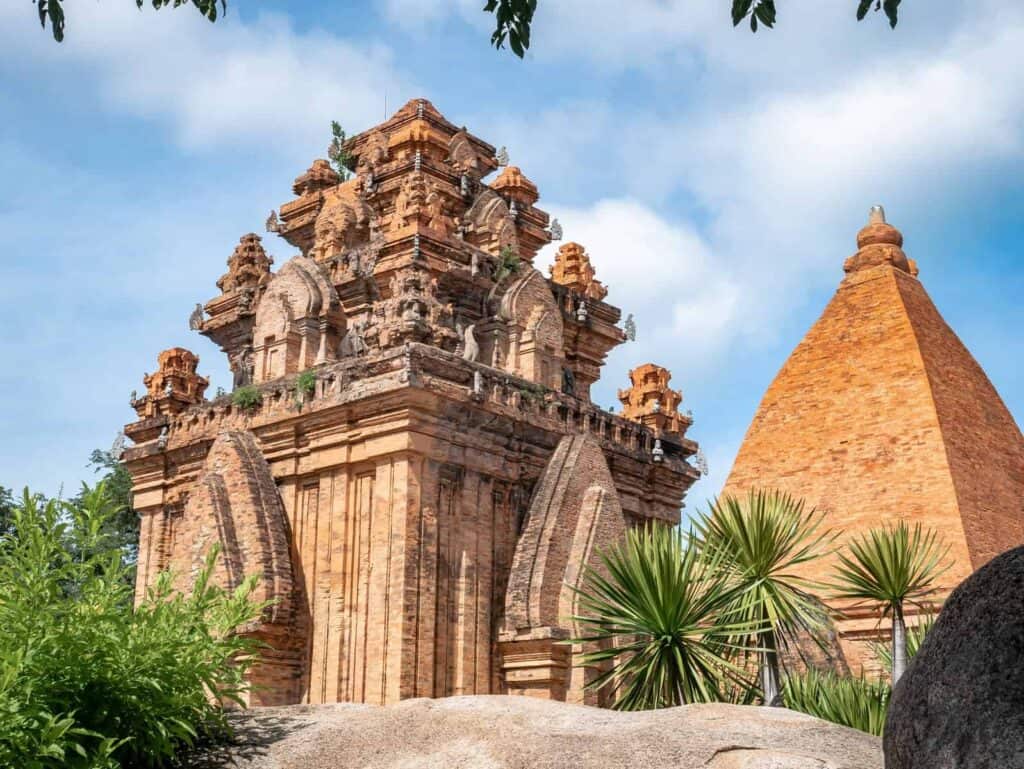
My Son Sanctuary
This UNESCO World Heritage Site is a complex of ancient temples, built between the 4th and 14th centuries. Despite suffering significant damage during the Vietnam War, My Son remains a fascinating testament to the Champa Kingdom’s cultural and religious influence.
The site is open daily from 6am-5pm and tickets can be purchased at the entrance.
Museum of Cham Sculpture
This museum, among Vietnam’s first built by the French, houses the world’s largest exhibition of Champa cultural artefacts, with over 2,000 antiques on display.
The museum is open daily from 7am-5pm and tickets can be purchased at the entrance.
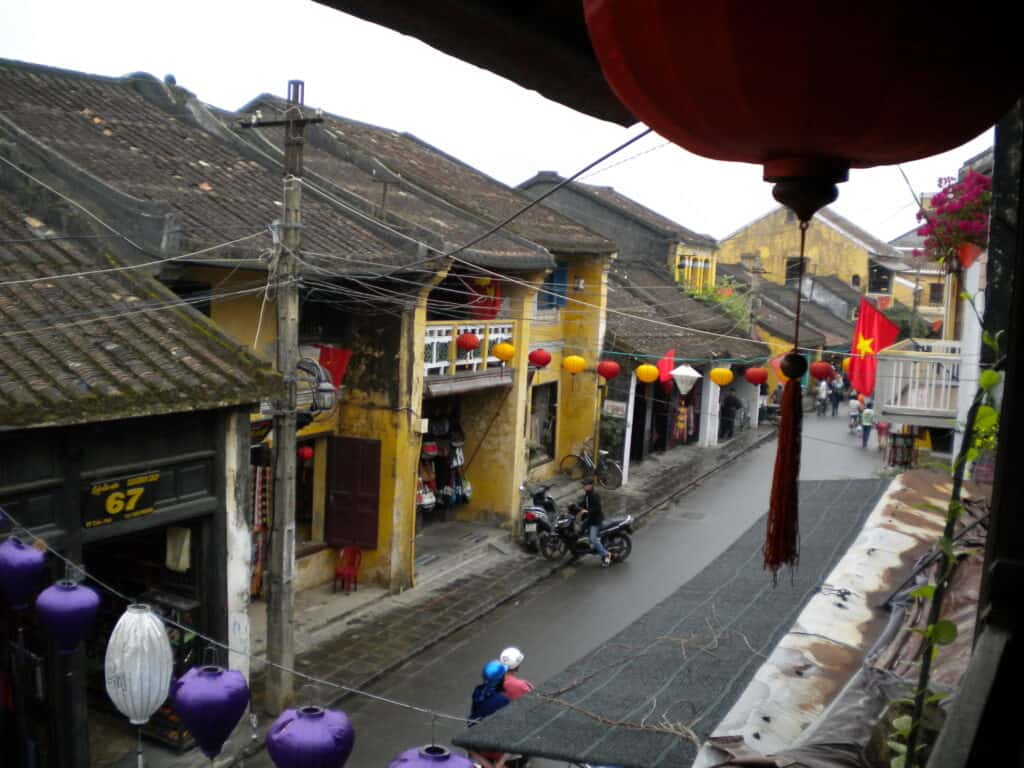
Hoi An
A UNESCO World Heritage site, Hoi An is a charming ancient town nestled on Vietnam’s central coast. This beautifully preserved trading port dating back to the 15th century is filled with narrow streets, surrounded by traditional wooden houses, family chapels, assembly halls, and colourful silk lanterns.
While, walking around the old town, make sure you…
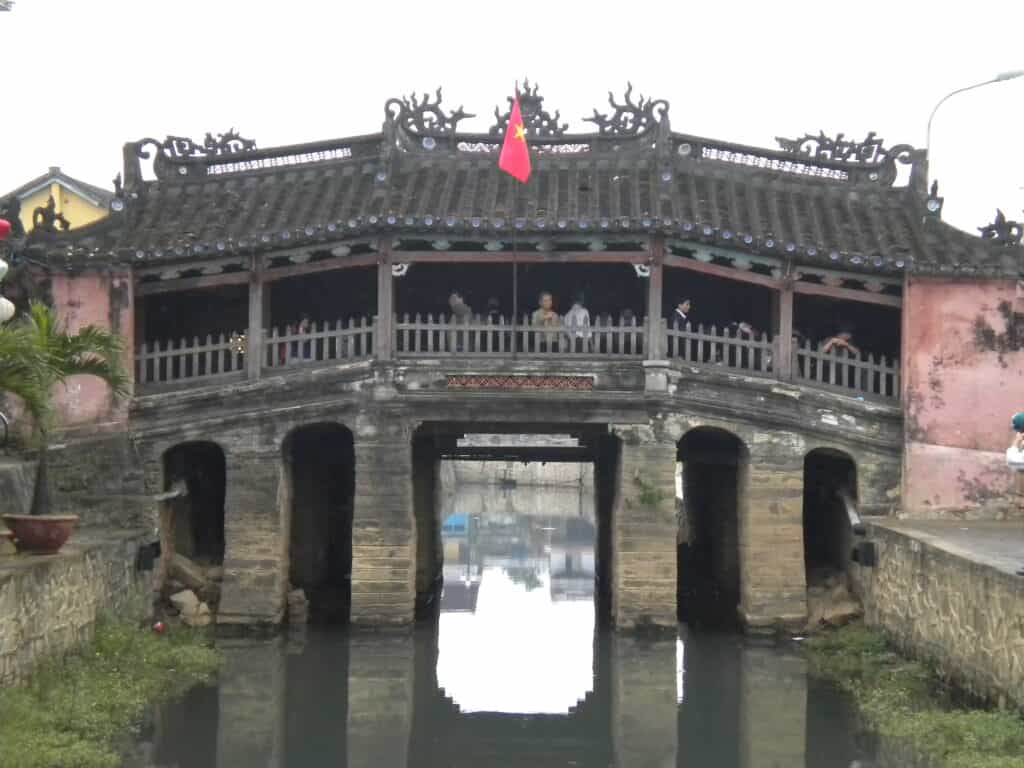
Visit the Japanese Covered Bridge
The Japanese Covered Bridge, also known as the ‘Chua Cau’ (Pagoda Bridge), is an iconic symbol of Hoi An. Built in the 18th century by Japanese craftsmen, the bridge is a beautiful historical piece that adds charm to the town.
Admire the Colourful Lanterns
One of the most captivating sights in Hoi An is the colourful silk lanterns that light up the streets after dusk. The lanterns add an enchanting ambiance to the town and make for excellent photograph opportunities.

The town’s famous Lantern Festival, held on the monthly full moon, is a sight to behold. It’s a time when the streets come alive with vibrant colours, traditional music, and dance performances. Floating lanterns set adrift on the Thu Bon River create an enchanting spectacle.
Explore the Assembly Halls
The Chinese Assembly Halls in Hoi An are fascinating relics of a bygone era. These halls were built by Chinese immigrants for social and religious gatherings.
Enjoy The Culinary Scene
Hoi An is a food lover’s paradise. Don’t miss out on trying local delicacies like Cao Lau (a pork noodle dish), White Rose Dumplings, and Banh Xeo (crispy pancakes). There are also numerous cooking classes available for those wishing to delve deeper into Vietnamese cuisine.
Try Out The Tailor Shops
Hoi An is renowned for its tailor shops, with hundreds dotted around the town. Whether you’re after a bespoke suit, a custom-made dress, or a pair of handmade shoes, the skilled tailors of Hoi An can turn your fashion dreams into reality, often within 24 hours.
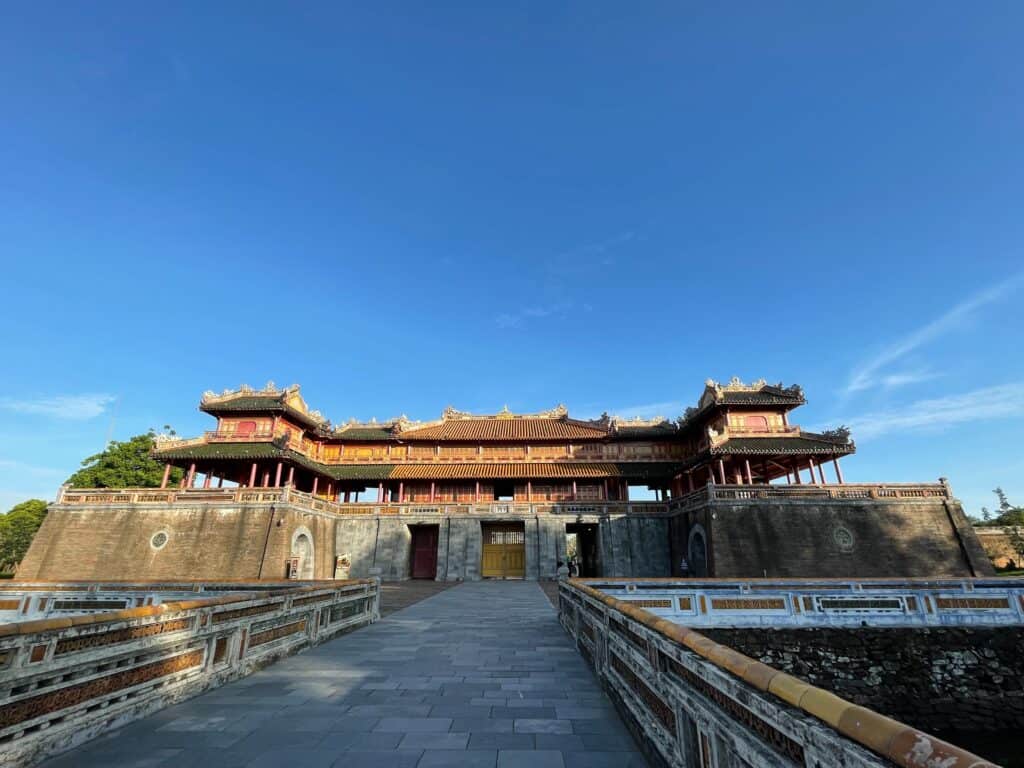
Historic Hue
Situated on the Perfume River, Hue is one of the best historic cities in Central Vietnam. The city was the imperial capital of the Nguyen dynasty and is home to many of Vietnam’s most unique cultural treasures.
Must see attractions in one of Vietnam’s best historical cities include…
The Imperial City
This UNESCO World Heritage Site is a well-preserved complex of temples, palaces, and ramparts. The Imperial City was once the centre of the Nguyen Empire, serving as Vietnam’s capital throughout the 19th and early 20th century. The site is divided into two main parts: The Citadel, housing administrative buildings and the Imperial Enclosure, which contains the Forbidden Purple City. Walking through the grounds, you will see palace buildings, temples and lush gardens.
The Imperial City is open daily from 7am-5pm and tickets can be purchased at the entrance.
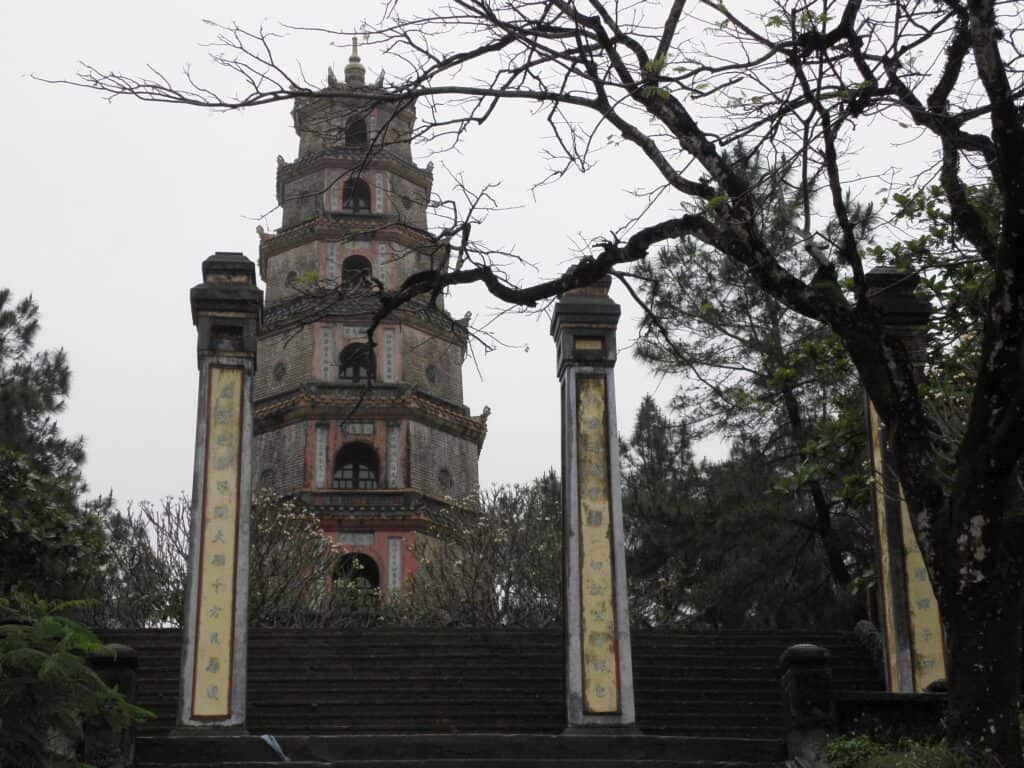
Thien Mu Pagoda
Located on the northern bank of the Perfume River, the Thien Mu Pagoda is an iconic symbol of Hue. This pagoda is the tallest religious building in Vietnam and offers stunning views of the river and the city. The peaceful surroundings and the gentle chime of the temple bells add to its serene charm.
The pagoda is free to visit and open daily from 8am-6pm.
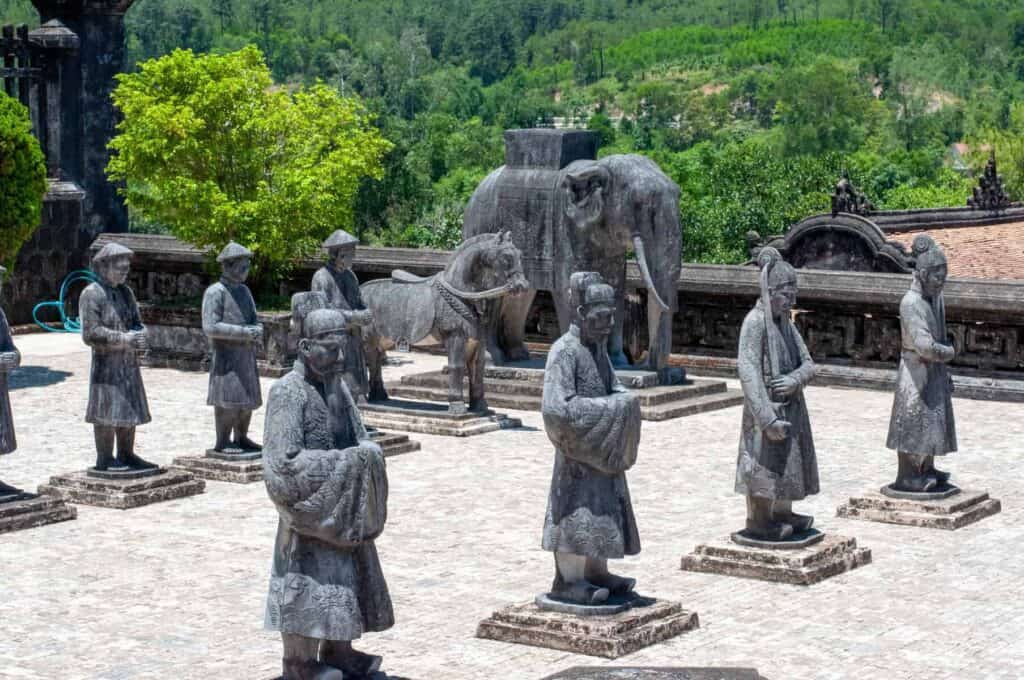
Tombs of the Nguyen Dynasty
Scattered along the banks of the Perfume River are the elaborate tombs of the emperors of the Nguyen Dynasty. Each tomb reflects the personality and tastes of the emperor it was built for, making every visit a unique experience. Don’t miss the tombs of Minh Mang, Tu Duc, and Khai Dinh, each remarkable in their architectural style and surroundings.
Vietnamese Culinary Delights
No trip to Hue would be complete without indulging in its culinary delights. Try the ‘Bun Bo Hue’, a spicy beef noodle soup, which is a local favourite, ‘Banh Khoai’, a crispy pancake filled with shrimp, pork, and bean sprouts, is another must-try.
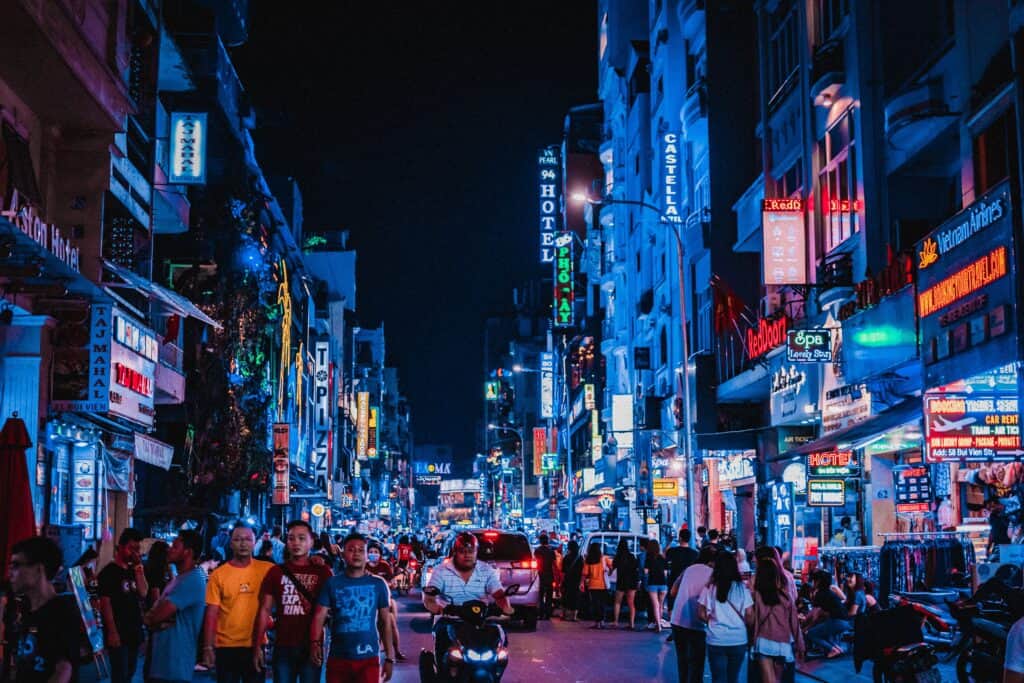
So To Wrap Up On The Best Cities in Vietnam…
These are the best cities in Vietnam to visit as they all offer an unparalleled opportunity to immerse yourself in the country’s rich history, stunning landscapes, and vibrant culture. From the bustling streets of Hanoi, the beauty of Da Nang, the old capital of Hue and the energy of Ho Chi Minh, each city provides a unique and great experiences. Whether you’re an adventurer, a history buff, or a foodie, a journey through Vietnam’s best cities promises endless discovery and unforgettable moments. So pack your bags and get ready to explore the country where every city tells its own fascinating story.
For another great Asian city, read our great blog on 15 Best Things To Do in Taipei.

